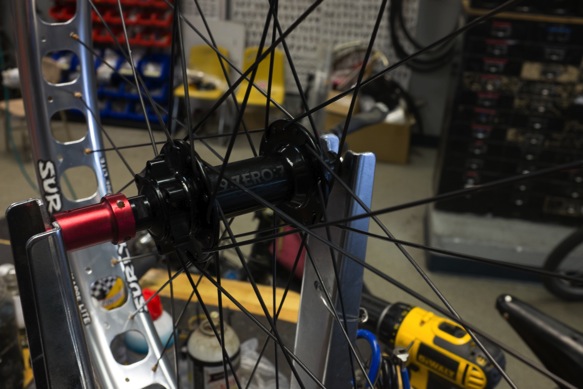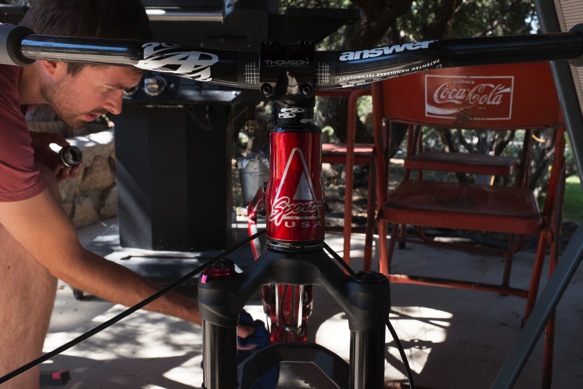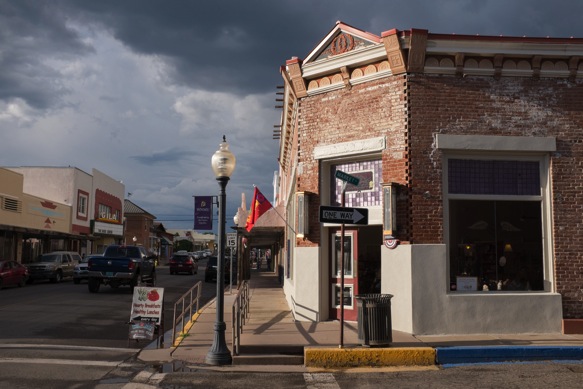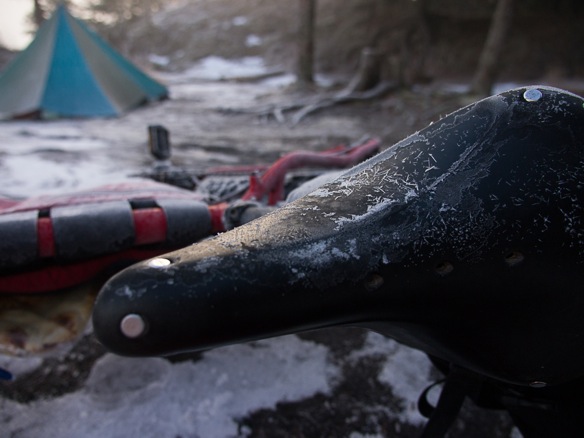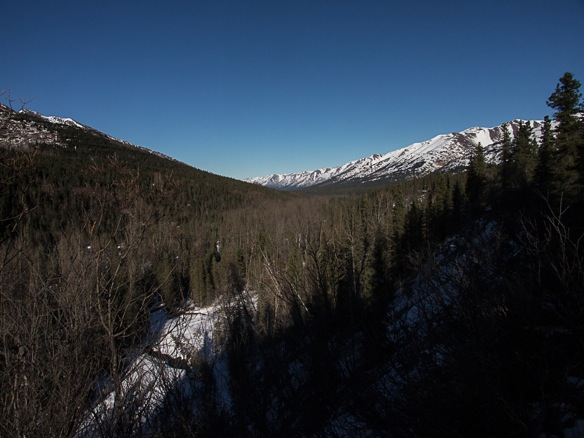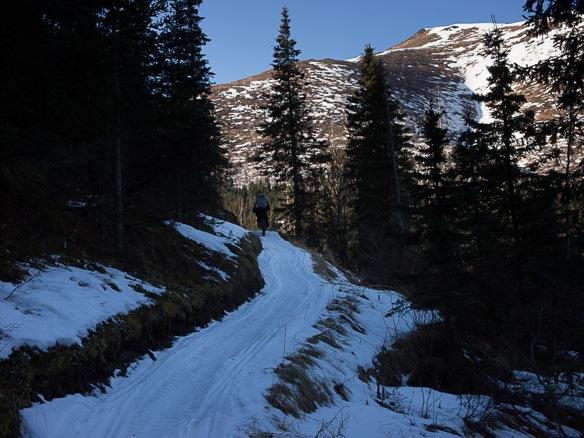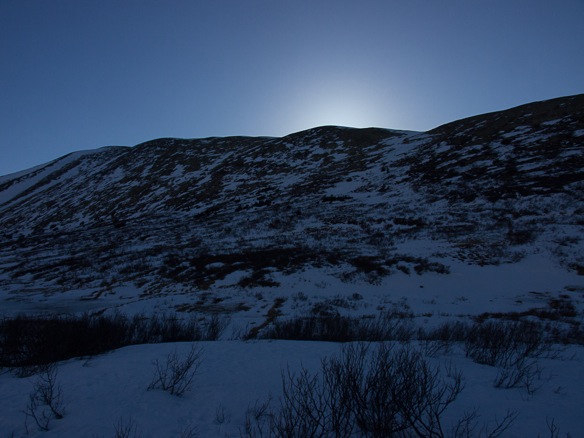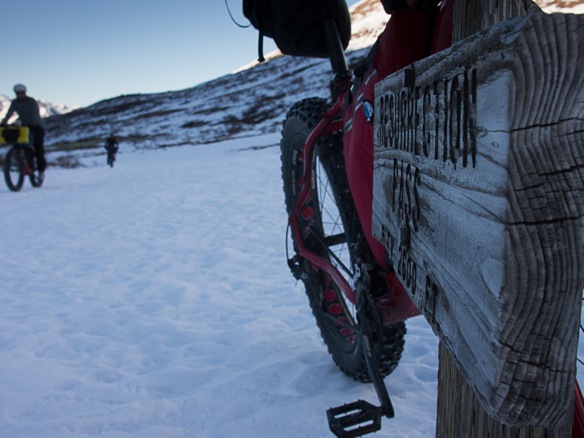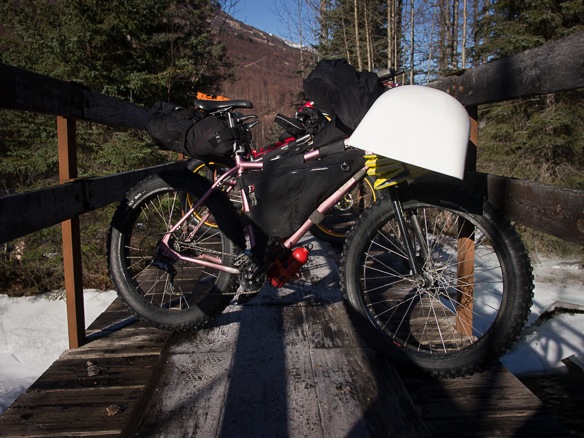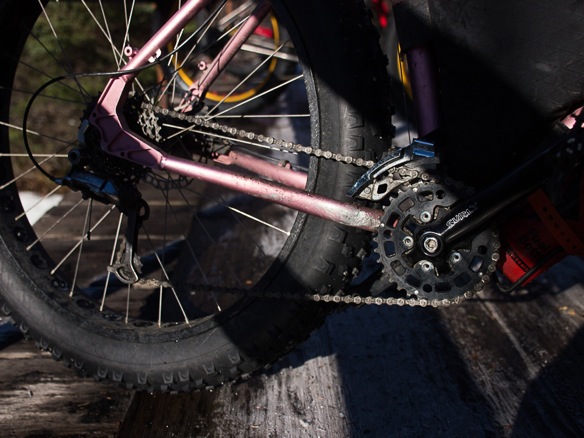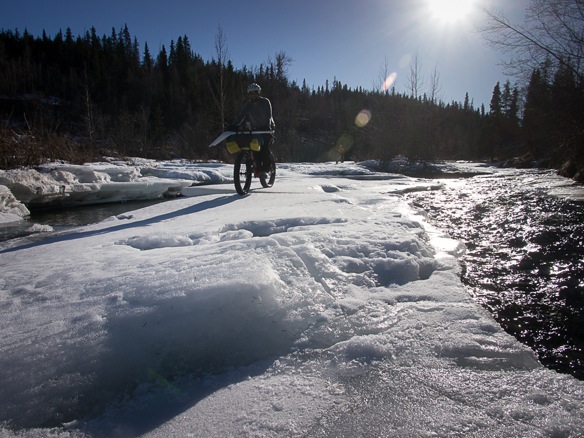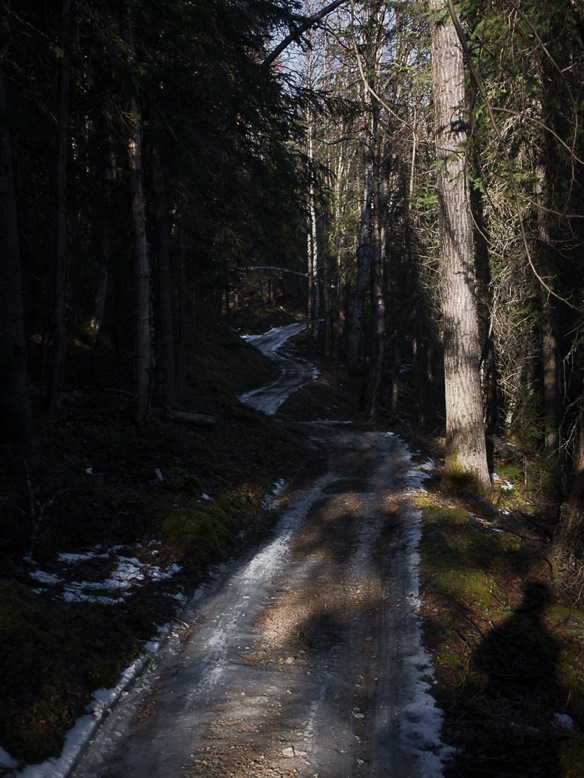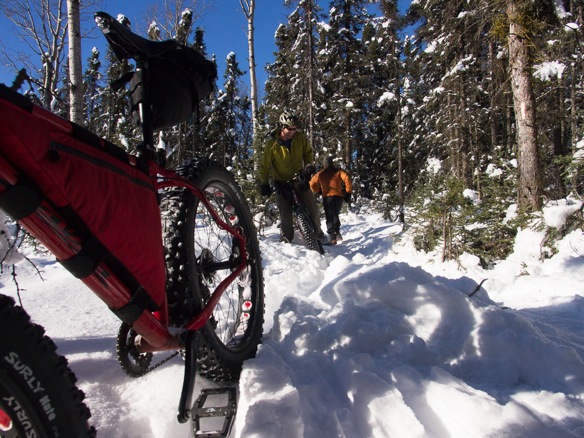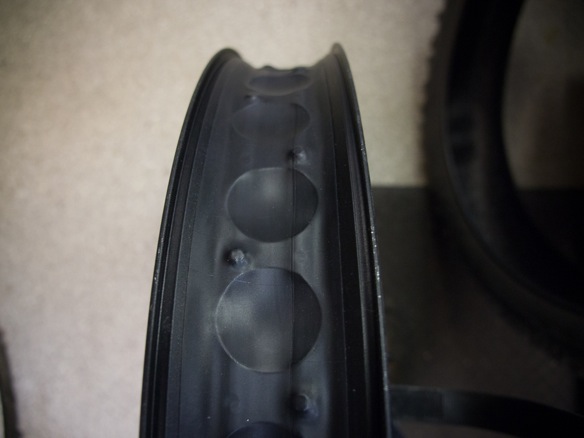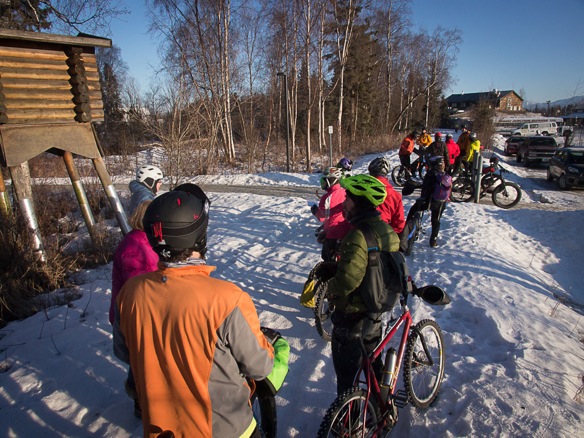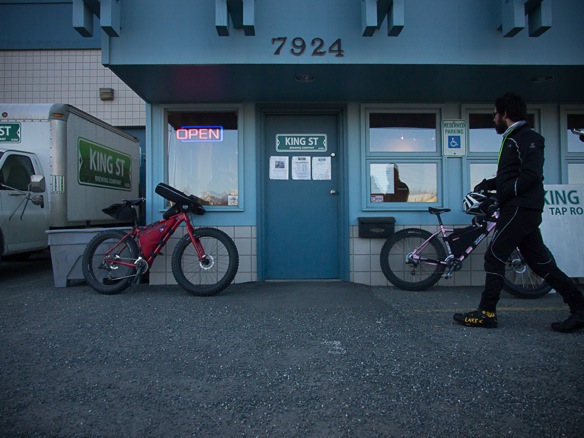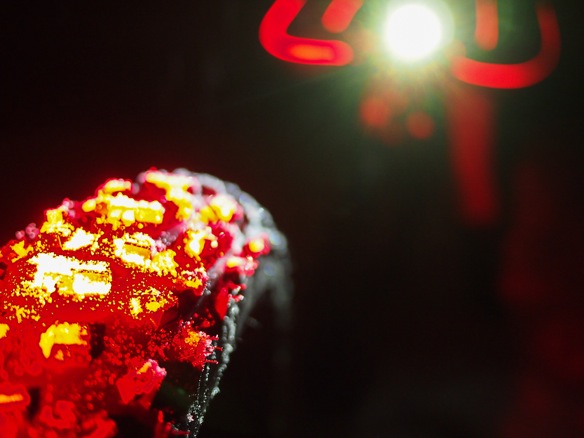
Attention San Diego area riders! Lael, Alex and I will be presenting about the Baja Divide on two consecutive nights, describing the routebuilding process, the rewards and challenges of touring in Baja, and more information to help plan a self-supported tour of the Baja Divide next season. Sponsored by the San Diego Mountain Biking Association, we will be at Border X brewing in Barrio Logan, San Diego on Feb 4, and in Escondido on Feb 5. Both events are at 5:30PM and more information can be found on the SDMBA Facebook Events page. Small donations to the project will be accepted to help fund immediate expenses.
The Baja Divide route is taking shape. Since December 8th, 2015, we have ridden well over 2000 miles from San Diego, CA to San Jose del Cabo, B.C.S., MX, including several loops in the southern cape. Several friends have joined our routefinding efforts on a diverse range of bikes, arriving from from Missoula, MT; Anchorage, AK; and Fort Collins, CO. These are the first riders to experience the Baja Divide, although at this phase that still includes a few dead-ends, a bit too much sand, and a lot of tacos and beer.
However, there are several gaping holes in the route and many smaller details which require honing. As such, Lael and I, accompanied by our friend Alex, have returned to San Diego. We are planning a few days to reorganize ourselves and tune our bikes before crossing the border at Tecate for another month of riding in Baja. All three of us will fly to Anchorage in early March to catch the last month of winter and the best month of fatbiking.
I’ve had many considerate offers from supporters of the Baja Divide project offering professional expertise, encouragement, and money. At this time, I have plans to build a proper website this spring, with help. I’m still considering the details of a printed resource, although I consider it an essential part of the project as a way to enable broad scale planning and to communicate with locals along the route, especially to share such basic concepts as where you are going and where you have come from. To follow the route, a GPS will be required. Lastly, I am not accepting any individual donations to the project at this time. Once the route file is complete and the new website is live, I aim to seek corporate sponsors for the project whose business and ethics reflect those of the Baja Divide. As such, though our efforts and their expense, the route is meant to be a gift to the bikepacking community, and all digital information will be available for free. Currently, Lael and I are funding the project, with limited in-kind assistance from Revelate Designs, SRAM, Advocate Cycles, Sinewave Cycles, The Bicycle Shop of Anchorage, Cal Coast Bicycles in San Diego, and SDMBA.
If anyone in the cycling, outdoor, or travel industry is interested in supporting the Baja Divide, please contact Nicholas at bajadivide@gmail.com.
————————————–
Alex arrived in Loreto with his expedition-grade Surly Pugsley, built with a Rolloff hub, Gates Carbon Belt Drive, and packing a small Martin Backpacker guitar. He is a close friend from university in Tacoma, WA, now working summers as a fisherman in SE Alaska, originally from Fort Collins, CO. He speaks excellent Spanish, having spent considerable time in Ecuador, Argentina, and Mexico. He has touring by bike in the USA, Baja, and Ecuador. Language skills aren’t essential to ride in Baja, although while developing the route it is incredibly helpful. The Pugsley is well suited to soft-conditions, although the weight of this particular build is burdensome on the more technical sections and on prolonged climbs.
While in San Diego, Alex is sending his portly Pugsley back home and replacing it with an XL Advocate Cycles Hayduke. After two months in Baja, we’ve decided that 3.0” tires are the preferred tire size, while a suspension fork makes the riding more safe, comfortable, and fun. The “sombrero casco” is a custom creation.

Erin also joined us in Loreto for three weeks, and flew out of San Jose del Cabo. She is a close friend from university in Tacoma, WA, originally from Ketchikan, AK, now residing in Missoula, MT. She has ridden the length of Baja by mostly paved roads in the past, and has also toured the Idaho Hot Springs Route. Erin rode her secondhand Trek X-Cal 29er with 2.4” and 2.3” tires on relatively narrow Bontrager Mustang rims, which required a little engineering to ensure a secure tubeless system. Her bike was well suited to all of the hardpacked riding, although she struggled in soft conditions more than the rest of the group as she was riding the narrowest tires.

Christina joined us in San Jose del Cabo for a sun-soaked ten day ride, escaping the cold, dark winter in Anchorage, AK. Christina and I first met while working at The Bicycle Shop in Anchorage, although she now manages the Trek Store of Anchorage. She is originally from San Fransisco, CA. She is an experienced mountain biker and road rider and is signed up for several endurance fatbike races this winter including the Susitna 100 and the White Mountains 100. She met us last year to ride in Israel for ten days, enjoying the worst weather in our three months in that country. We promised sun in Baja, and Baja delivered. Christina rode a Trek Farley 9.6 with 27.5×3.8” Bontrager Hodag tires on TLR Jackalope rims. Her bike excelled in soft conditions, over rough terrain, and while climbing, thanks to a lightweight bike, big wheels, and a minimal load.

Lael continues to enjoy her 27.5+ Advocate Cycles Hayduke. The tires are wide enough that at lower pressures, she can ride through all but the deepest sand, which the Baja Divide route intends to avoid. The modern geometry and the RockShox Reba suspension fork make technical descents a breeze. The bike climbs well and the tires maintain traction well on steep climbs, perhaps better than a fatbike in some cases. Ultra-wide tires have a tendency to sit atop rocks and gravel, loosing the connection to the ground. Expect a complete review at Bikepacking.com later this month.
We plan to service both of our forks in San Diego, as well as replace her chain and rear tire. Aside from those wear parts, her bike has performed flawlessly over Baja’s diverse roads and tracks.

My pink Meriwether Cycles custom has become a trusted friend. For riding in Baja my wide 35mm rims and 2.4”/2.5” tires do well, although even I am often wishing for a proper plus bike.
I was planning to convert the bike to 27.5+ with a new wheelset and tires, but have decided that the design is best suited to 29” wheels. Compared to the 29×2.4” and 2.5” tires I am using, a 27.5+ wheelset would lower the bike by about a centimeter. In fact, I like how it sits and how it rides right now, so I’ll save myself the expense and simply mount a bigger tire to the rear, a 2.5” Maxxis Minion DHF. These tires are more aggressive than I need, although the tire volume and durable casing are excellent.
I’m also looking forward to trying a SRAM 11-speed group soon. For the steep rolling terrain we often encounter, I find myself forcing shifts from the big ring to the little ring with haste, which occasionally gets ugly with a worn drivetrain (i.e. chain suck). A single chainring system reduces the number of shifting permutations, and focuses my efforts in a simple upshift-downshift pattern. I’ll be using a combination of parts, including a steel narrow-wide 28T chainring and a steel 1150 10-42t cassette. Can a SRAM 1×11 drivetrain be a durable touring group? Now that the technology has spread around the globe and to lower pricepoints, this will be a more frequent consideration.
We are all using tubeless wheel systems and between the five of us and two months time, we haven’t had any flat tires. Correction, Lael was carrying a 2” thorn in her tires for weeks, until it finally poked through her rim strip and flatted her wheel. The tire was fine, so we removed the tire and repaired the rimstrip with a small square of tape. The tire reseated easily and we were on our way.

Our time in Baja has been restful thanks to great weather and long nights under the stars, but since dedicating ourselves to the Baja Divide project, our commitments have grown and life is now quite busy again. We plan about six days of work and preparation while in San Diego, crammed into about three and half days. We cross the border back to Tecate this Saturday, February 6, and plan to arrive in La Paz by Mar 6 to catch a flight back to Alaska. That distance, and the amount of work we have in between, will be challenging.
Even so, life is good in Baja. We’ll be certain to enjoy our time here and we look forward to sharing it with others.






























